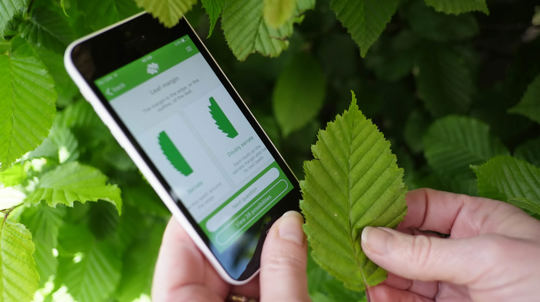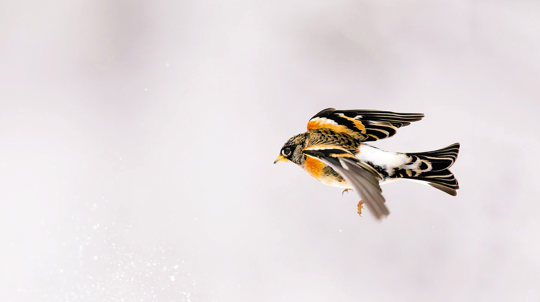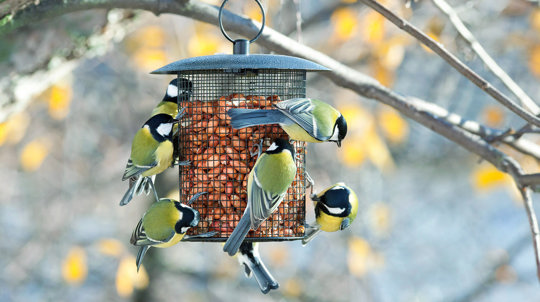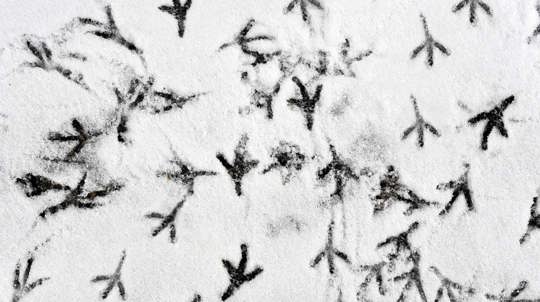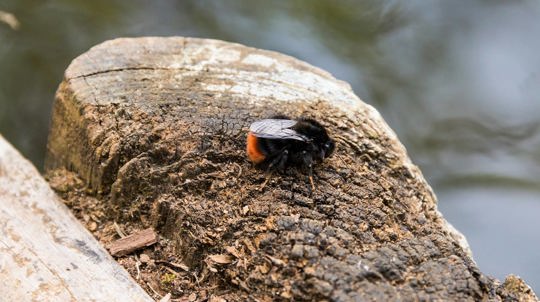Many plants slow down or stop growing during winter. With less heat and light to help their growth, they become dormant, conserving their energy for when conditions are more favourable. That's why winter is the best time to plant trees!
7 signs of winter in nature

Content manager
Winter is a magical time, with cold, crisp mornings and chilly starlit evenings. But when does winter really start and what signs in nature show that the season has arrived? Here are some of the best signs to look and listen out for.
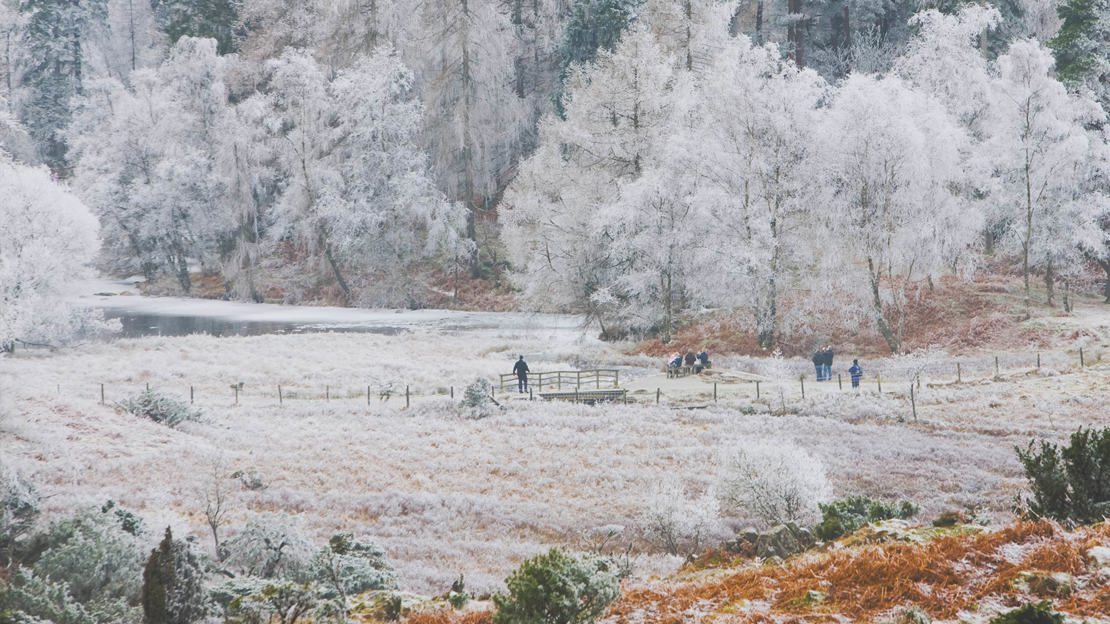
When does winter start?
Winter has two start dates depending on which definition you follow.
Astronomical
The start of winter is marked by the winter solstice – the day of the year with the fewest hours of daylight. Also known as the shortest day and midwinter, it usually falls on 21 December but can also be 20 December or 22 December. Astronomically-speaking, winter ends with the spring equinox around 20 March.
Meteorological
Weather scientists split the year into quarters based on annual temperature cycles for statistical purposes. By this method, winter starts on 1 December, and spring starts on 1 March.
Whichever definition you use, it won’t necessarily feel like winter on these specific dates - warm weather may give the impression of a lengthy autumn, or early icy blasts may feel like winter has started sooner.
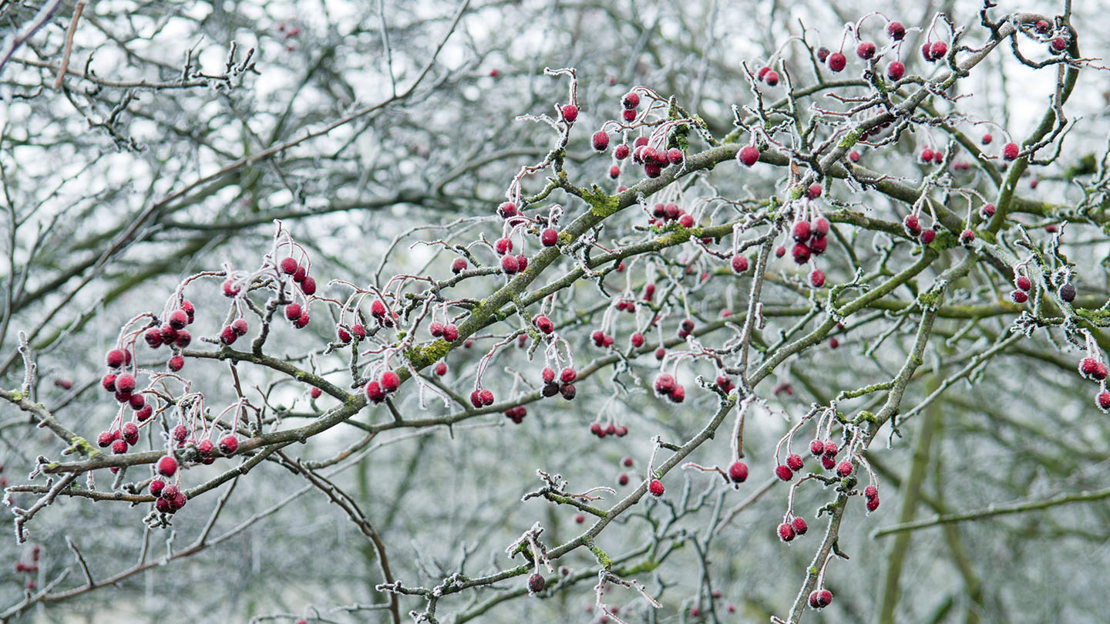
1. Bright berries on bare branches
By December, most deciduous trees have lost their leaves – look out for bare ash, elder, rowan and others. Oak trees often hang on to their leaves a little longer, but they too will likely be bare by the end of the month.
While we may miss seeing many of our native trees in full dress, their silhouettes give us chance to admire characteristics we might otherwise miss. Take time to check out their bark, from papery white silver birches to the deep ridges of sweet chestnut. Bright fruits are more noticeable too – look out for crab apples and blackthorn’s sloes as the final fruits fade through winter. Rowan berries will last into January and although an evergreen, holly’s bright red berries are unmissable from November to February.
Bare branches give us a better view of birds flitting from tree to tree too, bringing a spark of colour and energy to brighten the season.
2. Lawnmowing takes a break
Our grassy lawns also stop growing for winter. According to the Met Office, the end of ‘the growing season’ is marked by five consecutive days below 5oC. Our citizen science project, Nature’s Calendar, tracks the effects of weather and climate change on wildlife across the UK – its records show that the last lawn cut happens up until the end of November on average. The first grass cut of the year – suggesting the growing season’s start – tends to happen in February.
Join Nature’s Calendar to record your sightings – it takes just a few minutes to share what you see and you'll be adding to hundreds of years' worth of important data.
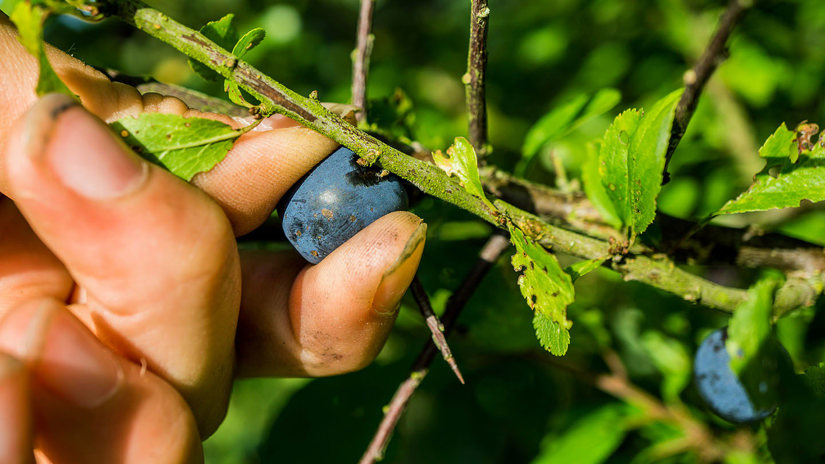
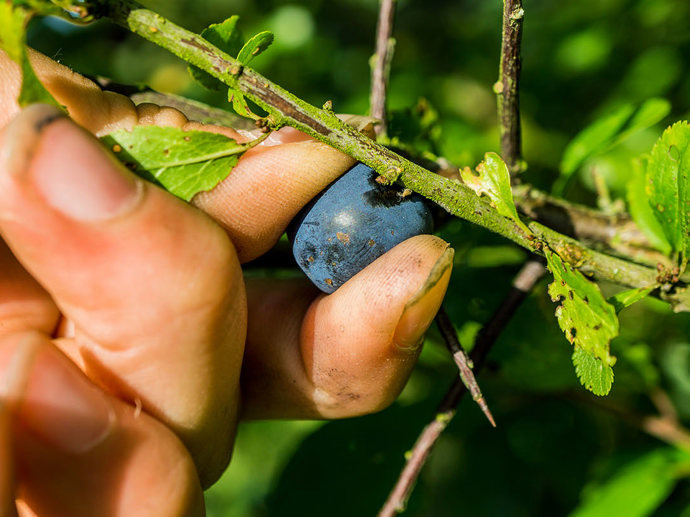
Spot the signs of the seasons
Have you seen your first butterfly or swallow of spring? Or your first ripening berry or autumn leaf tint? Let us know what's happening to animals and plants near you and help scientists track the effects of climate change on wildlife.
3. Primroses blooming
Our native wild primrose is common and widespread across the UK. Keep an eye out for their delicate yellow blooms appearing in woods and hedgerows in December. The pretty primrose doesn’t just indicate winter – it’s also associated with ancient woodland and could be a sign that you’re standing a rare and special habitat. You may spot snowdrops alongside them too - volunteers for our Nature's Calendar project have recorded some sightings as early as December in previous years.
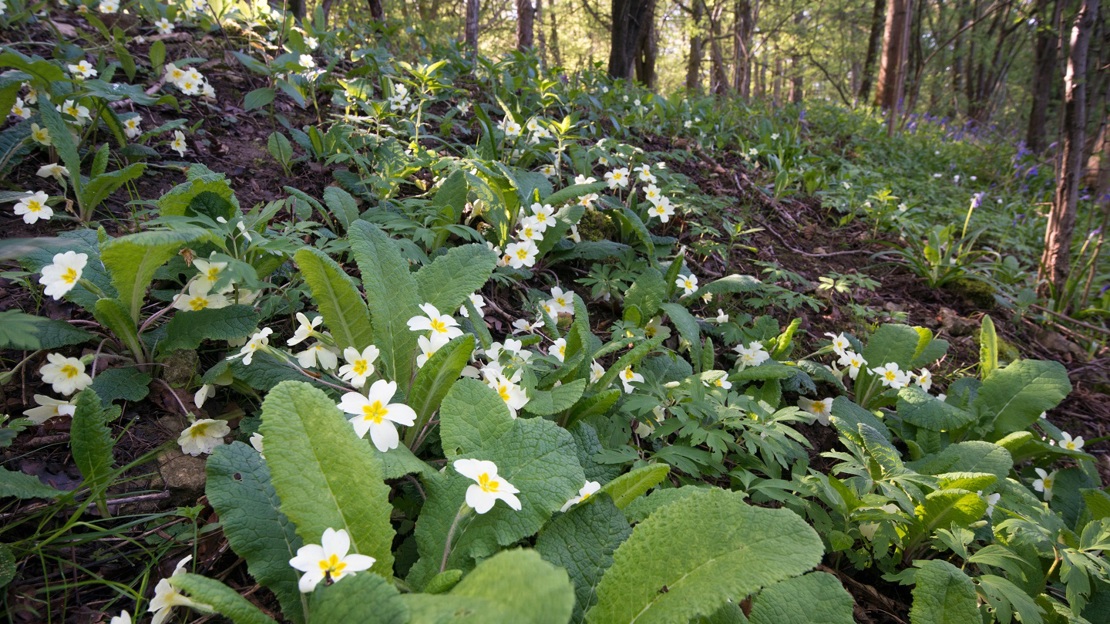
4. Sounds of the season
Amorous foxes
Listen for the night-time screeches and barks of foxes – they’re most vocal in winter as it’s their mating season. Their calls can travel long distances as they try to attract a mate and fend off rivals.
Territory defending birds
Perhaps more appealing is the robin’s silvery song. This fiery little bird is one of the few we can hear year-round as it sings to defend its winter territory and start wooing a mate ready for spring. Step into your garden or visit a wood and you’ll likely soon spot one – if you don’t hear it first.
The tawny owl is particularly vocal in winter as it protects its precious territory in advance of nesting as early as February. They’re nocturnal, so you’re more likely to hear one than see one. Listen out for their ‘twit twoo’ call in woodland or anywhere with mature trees.
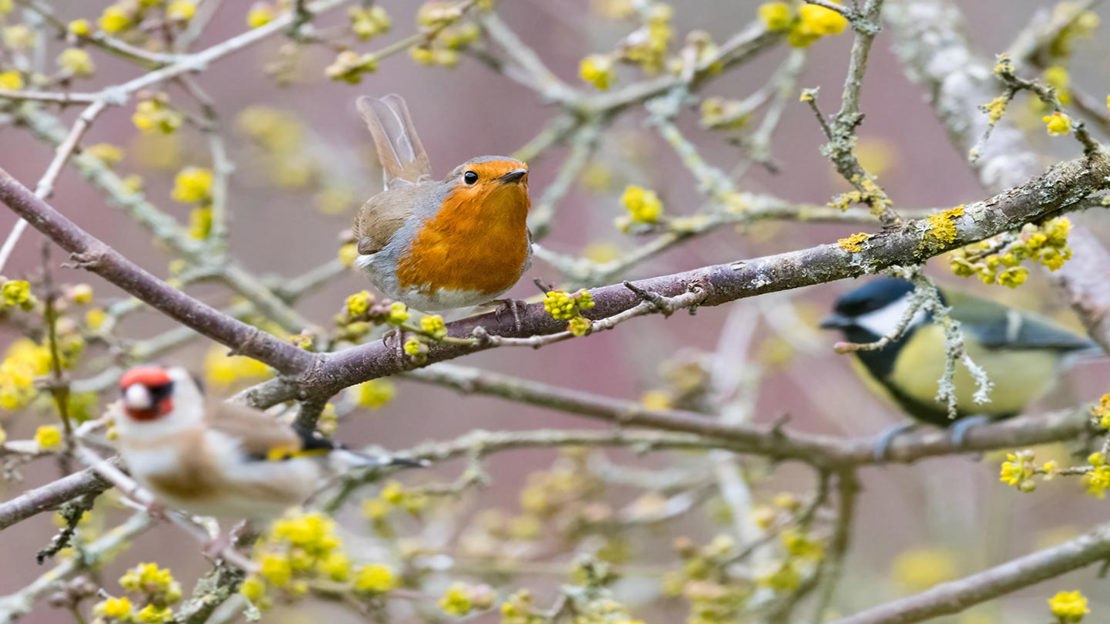
5. Birds on the move
The change in temperature and food availability affects many birds’ habits in winter. Though it may seem like a season of scarcity to us, the UK is warmer and more fruitful than some birds’ colder homes in Scandinavia and beyond! Look out for bolstered populations of birds like redwing, fieldfare and brambling as many fly hundreds of miles to settle here for the colder months.
Closer to home, you’ll likely notice more visitors than usual if you have feeders in your garden. Birds are grateful for your efforts as they seek to supplement their winter diet with high-fat, protein-packed nuts and seeds. Keep your eyes peeled for goldfinches, blue tits and other colourful guests frequenting your patch.
6. Starlings putting on a show
During the winter months, starlings group together in large communal roosts for warmth and safety. As daylight fades, thousands of birds join up above their roosting site in a swirling, twisting and turning mass known as a murmuration. They’re one of nature’s best spectacles and mesmerising to watch!
7. Bonus spot: camouflaged winter wildlife
If you’re eagle-eyed and super lucky, you might catch a glimpse of one of these animals that changes its appearance for winter.
In northern parts of the UK, some stoats and mountain hares turn white to disguise them in their snowy surroundings. This helps stoats to steal up on prey unnoticed, while the hare can hide from predators. The ptarmigan, a member of the grouse family found only in the Scottish Highlands, also becomes snow-white in winter to camouflage it from potential hunters.
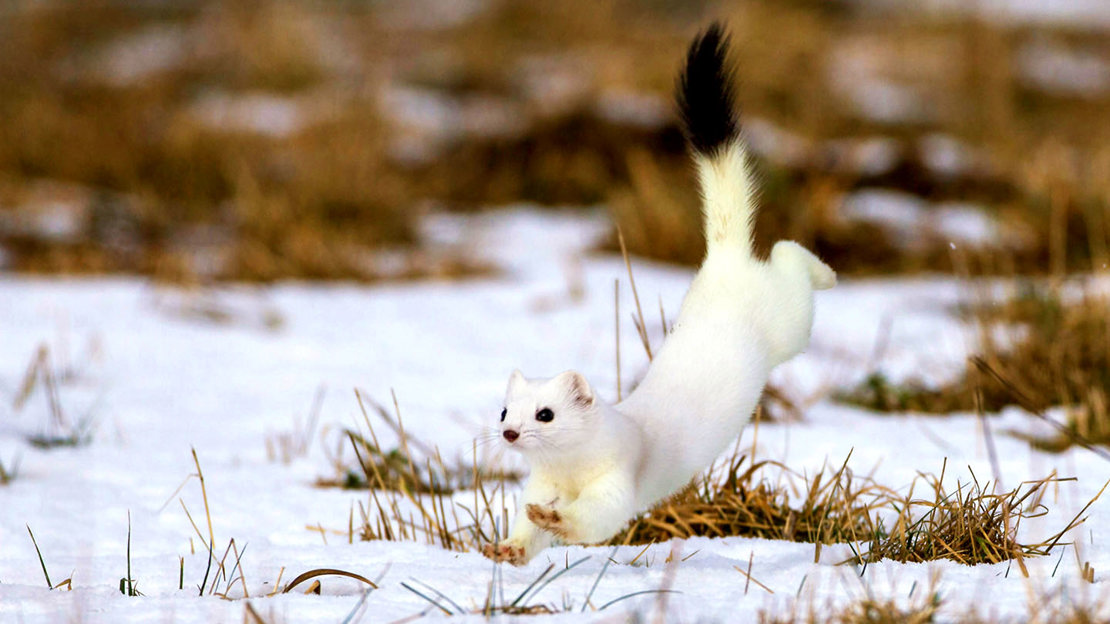
Where to see signs of winter
You don’t necessarily need to travel far to spot these signs of winter. Gaze through your window, walk around your neighbourhood or experience a winter wonderland in nearby woods and countryside. Wrap up warm and take the time to enjoy the sights and sounds that this wonderful season has to offer.
What can you spot in your local wood?
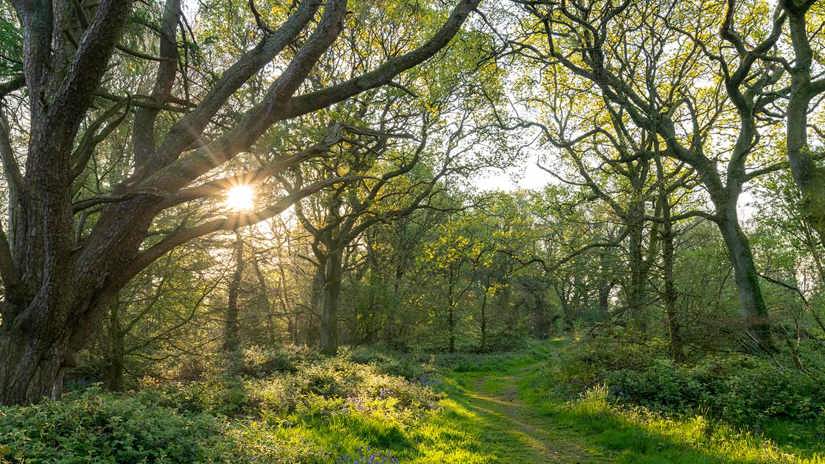
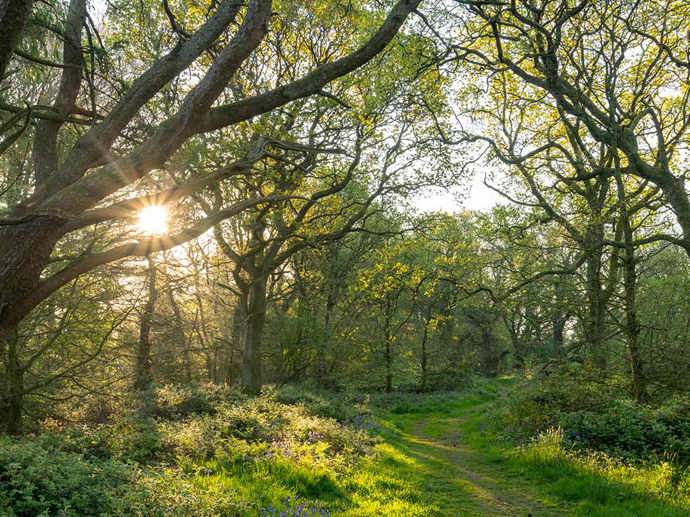
Go exploring
Primordial landscapes, tangled branches, breathtaking wildlife and miles of woodland trails. From the countryside to cities, we care for thousands of woods throughout the UK, all free to visit.



